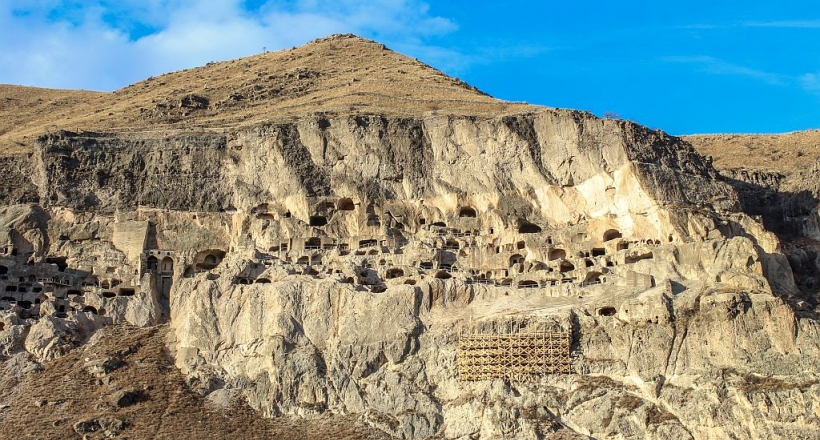Vardzia cave town is definitely a must have tourist attraction when traveling to Republic of Georgia, located in region of Samtkshe - Javakheti in about one hour drive from Akhaltsikhe town. For years I have been reading and heard a lot of stories of this place, but first visited just at the end of 2015. I was missing a lot.
We arrived here after sightseeing of Rabati castle in town of Akhatsikhe. Twilight was approaching and I was left with no options as to use best photography techniques I was familiar with, to get a decent photo story from Vardzia Cave town.
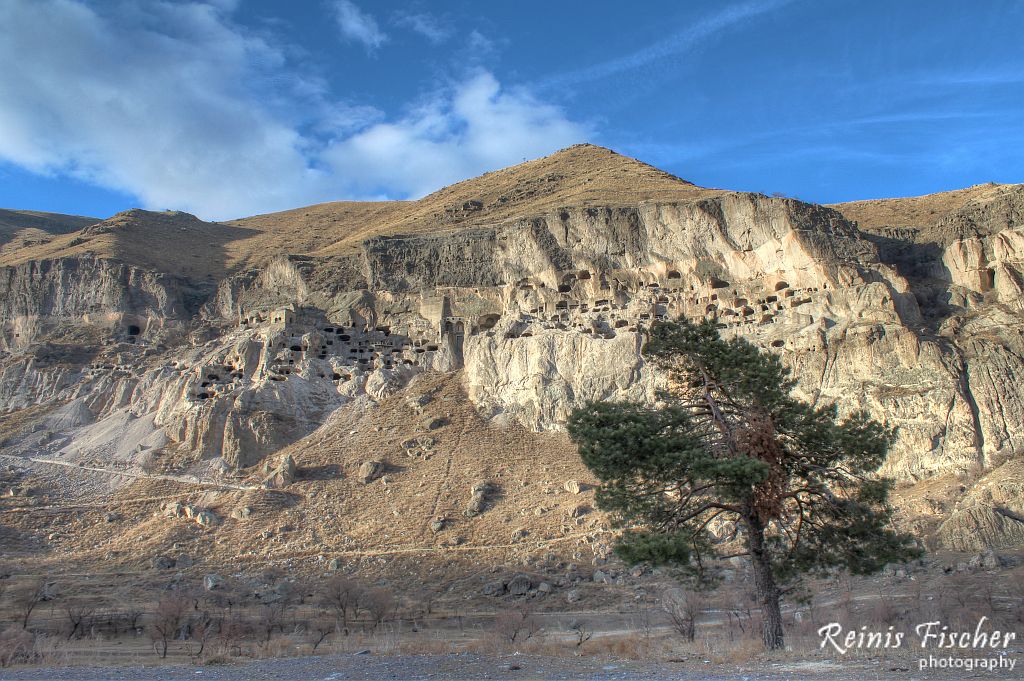
Vardzia cave town in Republic of Georgia
This was my first attempt of a decent photography, I opted using HDR here
The caves stretch along the cliff for some five hundred metres and in up to nineteen tiers. The Church of the Dormition, dating to the 1180s during the golden ageof Tamar and Rustaveli, has an important series of wall paintings. The site was largely abandoned after the Ottoman takeover in the sixteenth century.
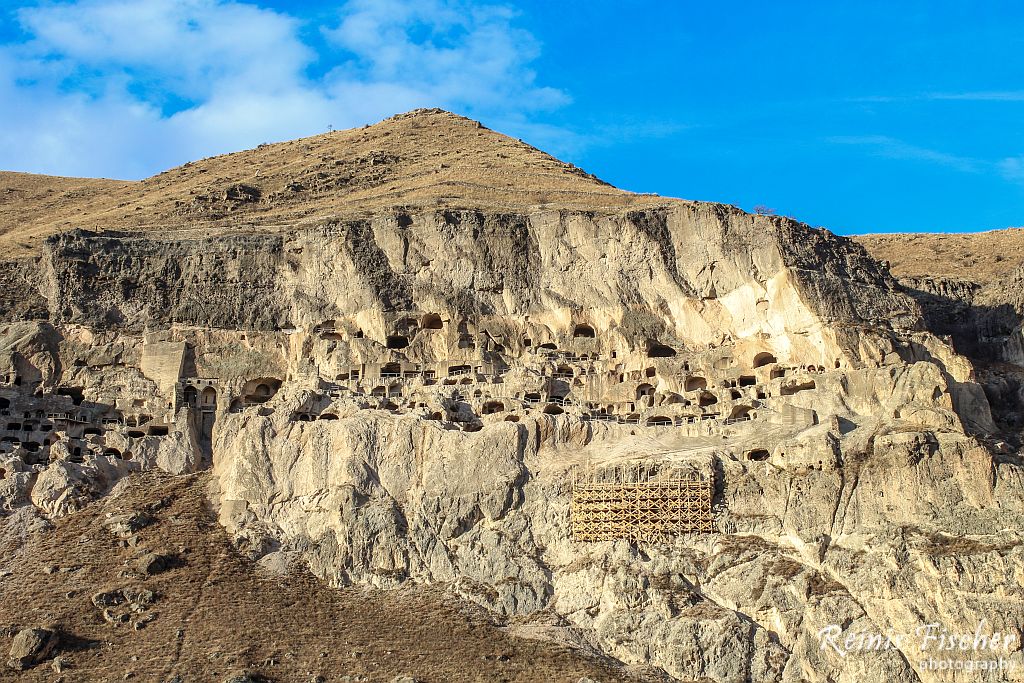
Vardzia cave town from a distance
While above image is just a regular photo
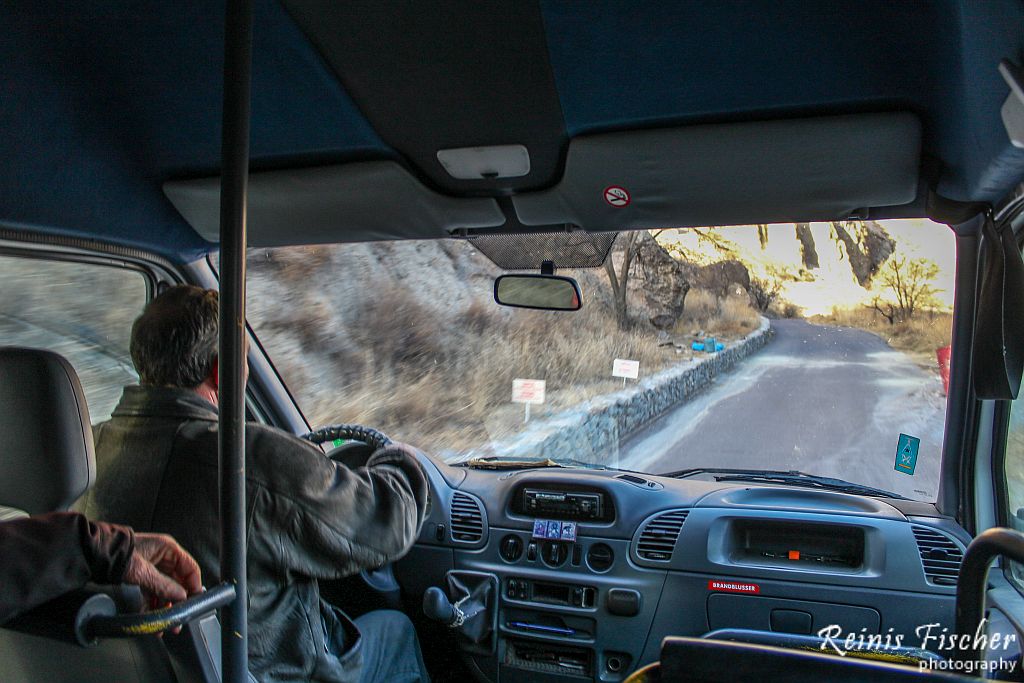
Minivan taking to the caves
We bought our entrance tickets (about 7 lari( and booked a guide (about 15 lari), now we were taken some 500 meters in a minivan, up to the caves.
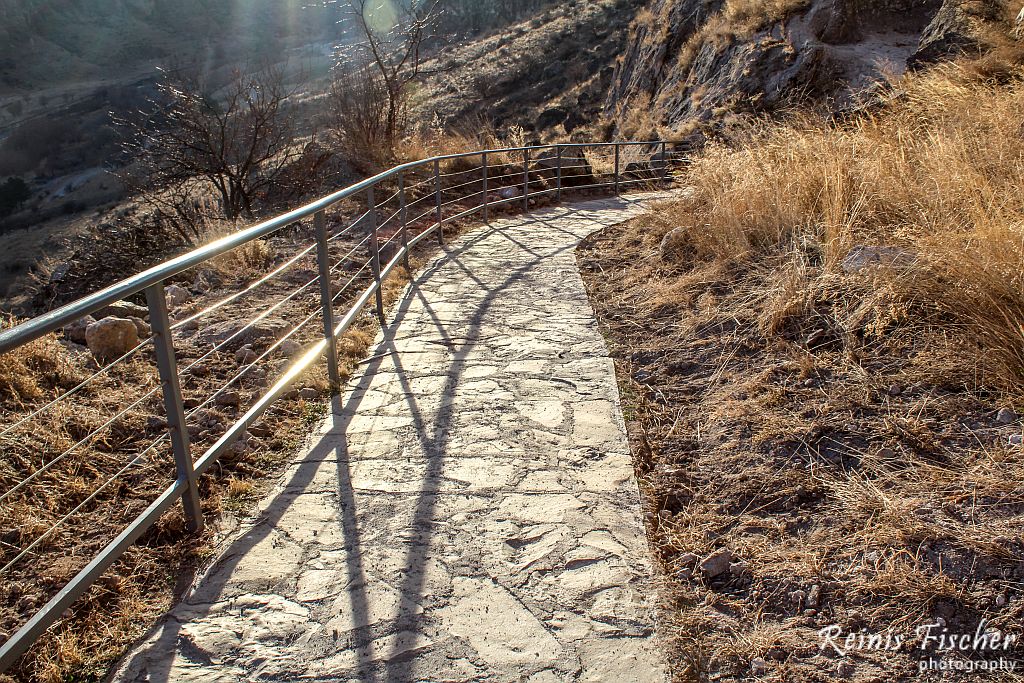
Trails at Vardzia cave town
Some construction works were performed at site, to build more pawed pathways.
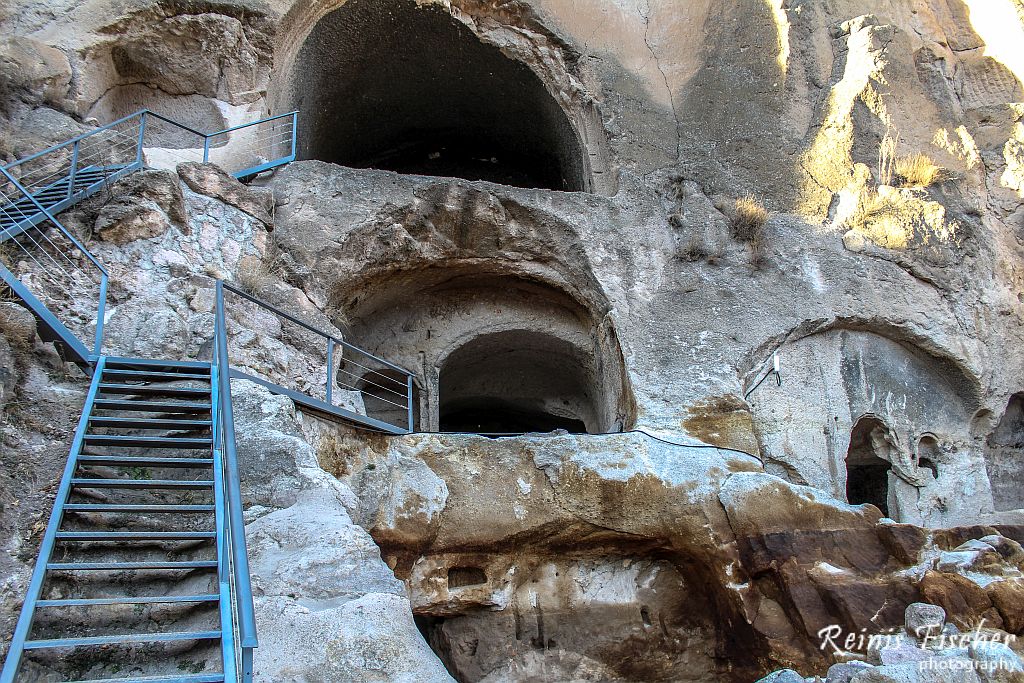
Caves built in rocks
Since 1985 the site has formed part of the Vardzia Historical–Architectural Museum-Reserve, which includes forty-six architectural sites, twelve archeological sites, and twenty-one sites of monumental art. In 1999 Vardzia-Khertvisi was submitted for inscription on the UNESCO World Heritage List as a Cultural Site.
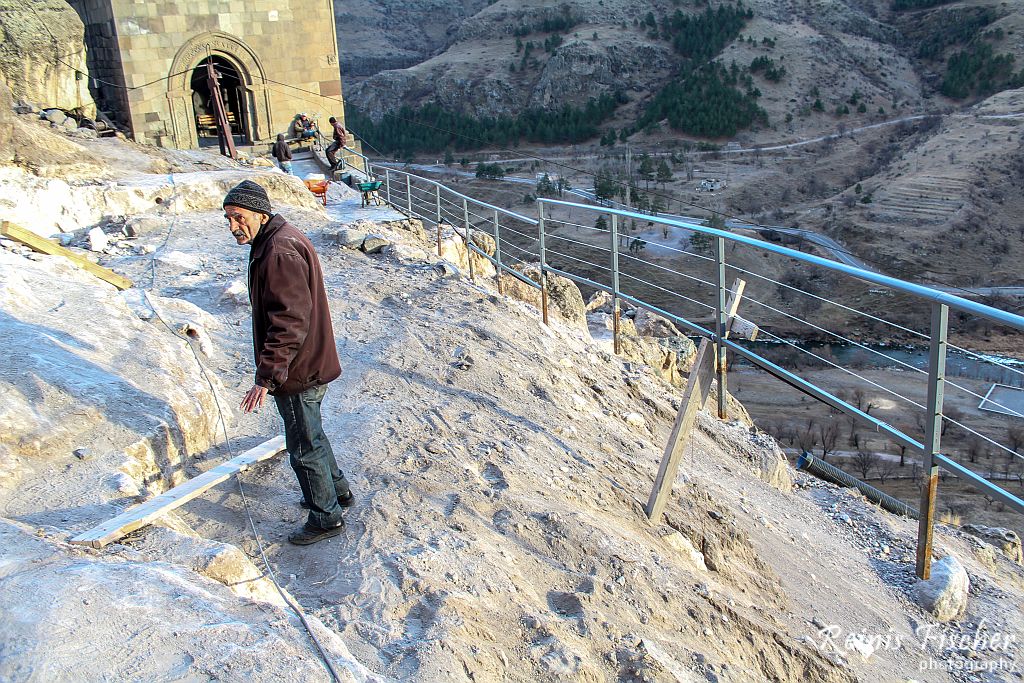
Our guide Vladimir
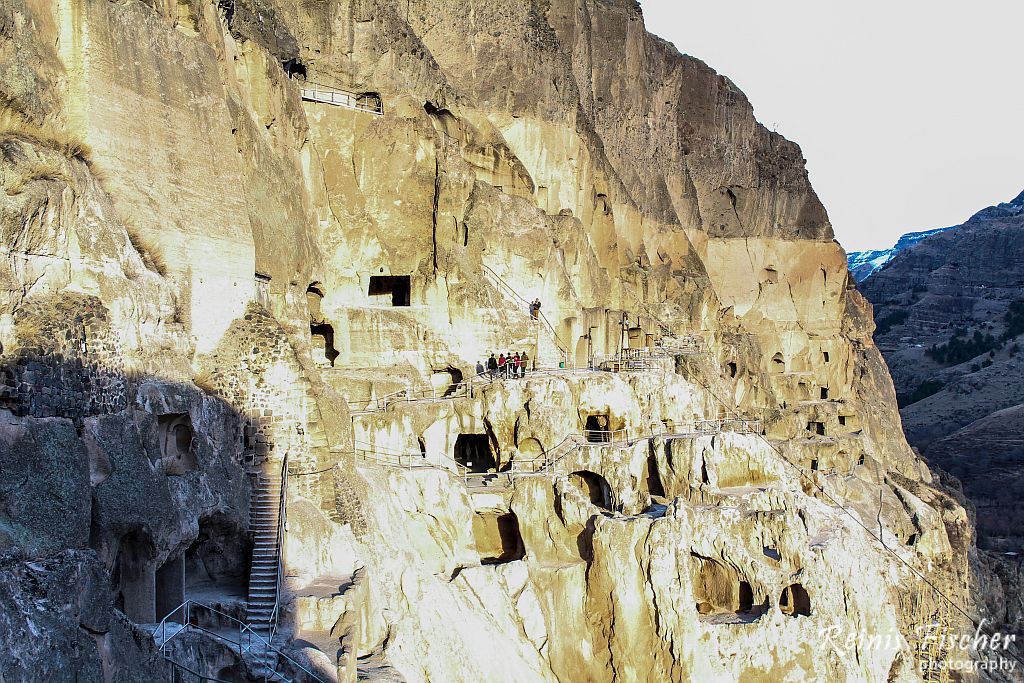
Vardzia Cave town monastery complex
Soviet-era excavations have shown that the area of Vardzia was inhabited during the Bronze Age and indicated the reach of Trialeti culture. Cave settlements such as Uplistsikhe are known along the Mtkvari River from at least the fifth century BC, while rock cut architecture in the context of Georgian Christianity is known from Zedazeni and Garedzhi from the sixth century AD, and more locally from Vanis Kvabebi, Cholta and Margastani from the eighth century. Four distinct building phases have been identified at Vardzia: the first during the reign of Giorgi III (1156–1184), when the site was laid out and the first cave dwellings excavated; the second between his death and the marriage of his successor Tamar in 1186, when the Church of the Dormition was carved out and decorated; the third from that date until the Battle of Basian c.1203, during which time many more dwellings as well as the defences, water supply, and irrigation network were constructed; while the fourth was a period of partial rebuilding after heavy damage in the earthquake of 1283.
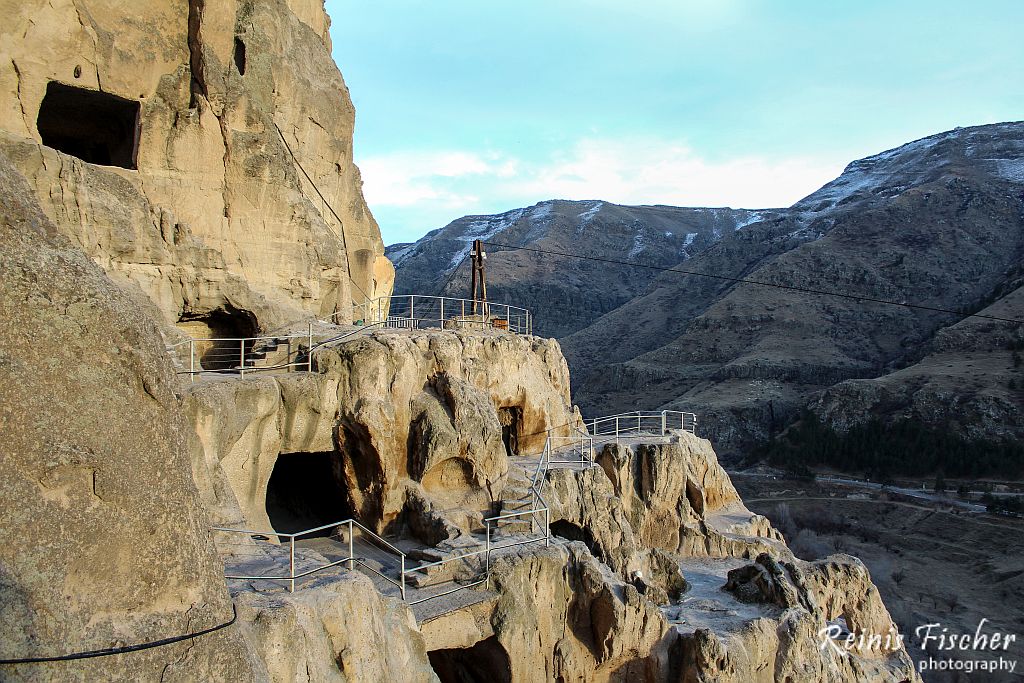
Vardzia cave town
A number of documentary sources supplement the knowledge derived from the site's physical fabric. The collection of chronicles known as the History of Georgia refers to Tamar erecting a church to house the icon of the Virgin of Vardzia after receiving divine help in her campaigns, before transferring the monastery from Upper or Zeda Vardzia. Tamar is said to have departed from Vardzia during her campaign against the Muslims, and her ensuing victory at Basian is celebrated in the Hymns in Honour of the Virgin of Vardzia by Ioane Shavteli. The History of Georgia also relates how Vardzia escaped the Mongol invaders in the 1290s. The Persian Safavid chronicler Hasan Bey Rumlu describes Vardzia as a "wonder", "impregnable as the wall of Alexander the Great", before recounting its sack by the Persians under Shah Tahmasp I in 1551; a near-contemporary note in the Vardzia Gospel tells of its repatriation from a Persian bazaar. After the arrival of the Ottomans in 1578, the monks departed and the site was abandoned.
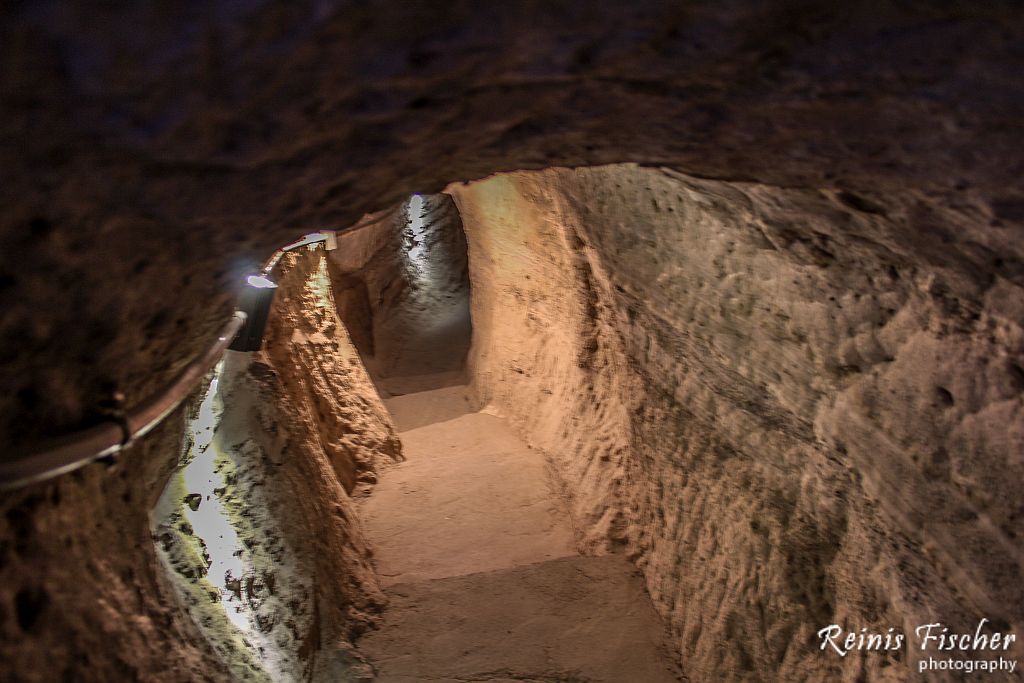
Secret tunnel at Vardzia Cave town
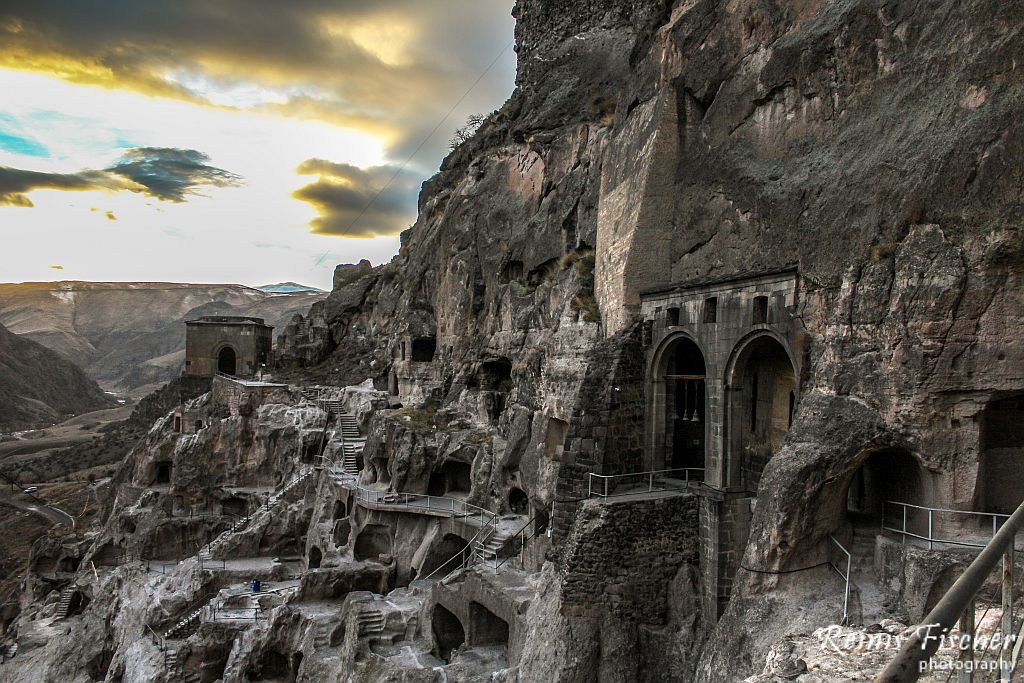
Vardzia
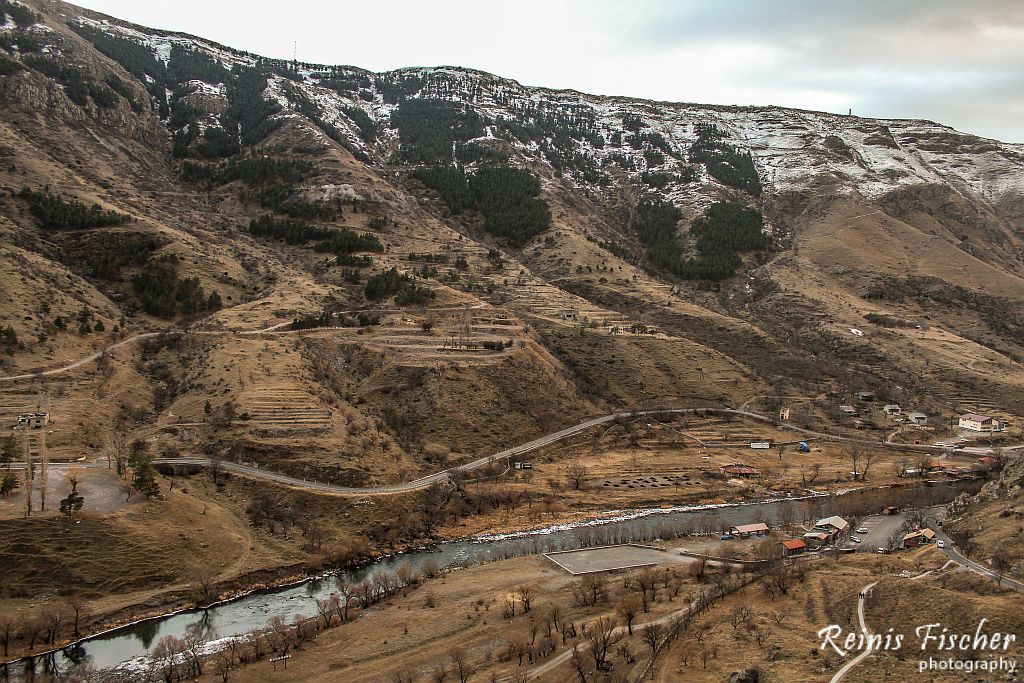
View to Mtkvari river from Vardzia
